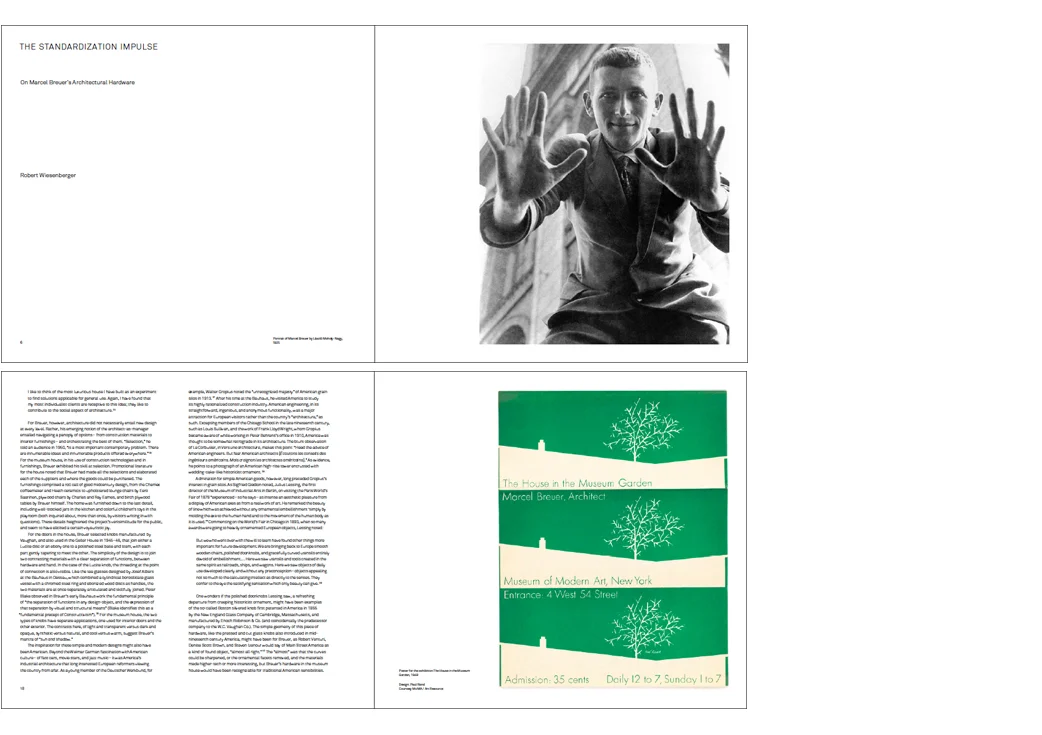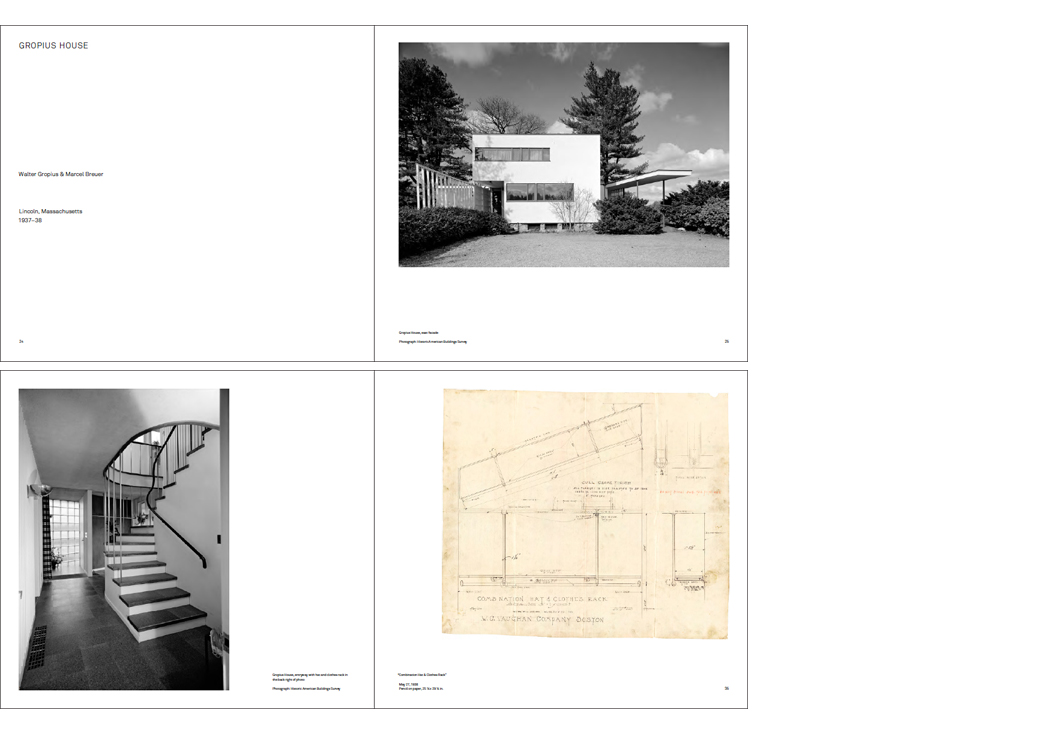Transitional Moments: Marcel Breuer, W. C. Vaughan & Co. and the Bauhaus In America
Essay by Robert Wiesenberger
Catalogue Entries by H. Reynolds Butler
RELEASE DATE: December 2018
Standardization is not an impediment to the development of civilization, but, on the contrary, one of its immediate prerequisites. A standard may be defined as that simplified practical exemplar of anything in general use which embodies a fusion of the best of its anterior forms – a fusion preceded by the elimination of the personal content of their designers and all otherwise ungeneric or non-essential features.
—Marcel Breuer
For Breuer, however, architecture did not necessarily entail new design at every level. Rather, his emerging notion of the architect-as-manager entailed navigating a panoply of options – from construction materials to interior furnishings – and orchestrating the best of them. “Selection,” he told an audience in 1950, “is a most important contemporary problem. There are innumerable ideas and innumerable products offered everywhere.” For the museum house, in his use of construction technologies and in furnishings, Breuer exhibited his skill at selection. Promotional literature for the house noted that Breuer had made all the selections and elaborated each of the suppliers and where the goods could be purchased. The furnishings comprised a roll call of good midcentury design, from the Chemex coffeemaker and Heath ceramics to upholstered lounge chairs by Eero Saarinen, plywood chairs by Charles and Ray Eames, and birch plywood tables by Breuer himself.
—From Robert Wiesenberger’s essay “The Standardization Impulse”
Architect Marcel Breuer’s “House in the Museum Garden,” now considered one of the most influential architecture exhibitions of the 20th century, was commissioned by the Museum of Modern Art and built in their garden in 1949. Exhibited to record attendance, the house featured the updated Bauhaus prescriptions for modern living—an airy, informal combination living room / dining room and a pass-through kitchen—and was intended to inspire the future of American housing. The project featured custom hardware produced by W. C. Vaughan in collaboration with Breuer, which included everything from mahogany door knobs to cabinet hinges. Vaughan also supplied hardware for Breuer’s iconic Frank House, the Geller House, Breuer’s own houses in Massachusetts and Connecticut plus houses by Walter Gropius, Philip Johnson and other modernist masters. An essay by historian Robert Wiesenberger, historical black-and-white and color photographs by Ezra Stoller plus shop drawings by Vaughan of the hardware complete this deeply engaging and important architectural publication.
Price: US $45
ISBN: 8-0-9859958-6-7
Hardcover
10 x 11.5”
144 pages
100 color & b&w illustrations
Release date: December 2018
Transitional Moments is published in a limited edition of 500 copies.





